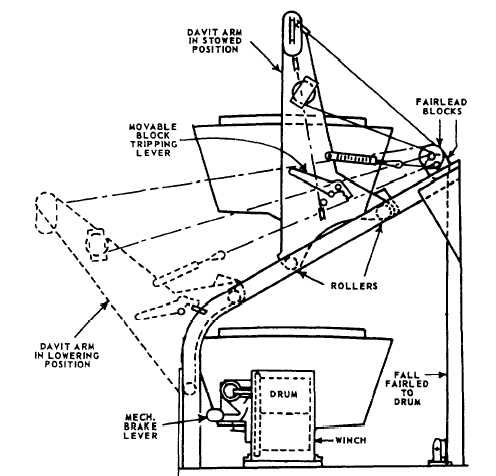| |
CAPSTANS
Capstans are mounted on deck to ease the handling
of large, heavy mooring lines and wires. These capstans
may be separate machinery units or part of the anchor
windlass. The capstan's spool-shaped drum keeps the
lines from slipping, especially when wet.
Most capstans are electrically driven. Depending
on the class of ship and its size, capstans may be located
any place on the deck, but they are usually found on the
forecastle and fantail.
HEAVING LINE
A heaving line is a light line used to get a hawser
ashore when mooring a ship to the dock or in passing a
heavy line for any purpose. One end of the heaving line
is fitted with a monkey fist to assist in getting distance
when heaving. After making the heave, the other end of
the heaving line is bent to the hawser with a bowline.
The heaving line is coiled carefully with about
two-thirds of the coil held in the right (casting) hand and
the rest in the left hand.
In heaving, the right arm should be held straight,
and the line in the left hand allowed to run out freely.
Frequently the problem in not getting a long heave is
that the coil in the left hand is not arranged clearly for
running. Prewetting the line is done to improve distance
and handling. To become proficient in heaving, you
must practice frequently. Every Seaman should practice
making casts. A poor cast is always a reflection on the
ability of the Seaman.
BOAT DAVITS
LEARNING OBJECTIVE: List and explain the
different types of boat davits and the safety
devices.
A boat davit is a device that is designed specifically
for handling a ship's boat or boats. The boat davit is
designed to handle the ship's boats from the stowed
position, through the lowering and hoisting evolutions,
and returning the boat to stowage.
Figure 4-13.–Trackway gravity davit.
4-12
|

